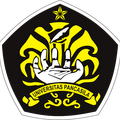Penyesuaian Diri pada Anak Usia Dini dengan Language Disorder
Abstract views: 1688 | PDF (Bahasa Indonesia) downloads: 2548
Abstract
The purpose of this literature review is to describe the adjustment of early aged children with language disorder. Through the ProQuest and EBSCO electronic databases with publication dates between October 2009 and October 2019, 4 relevant articles were obtained. Based on the results of the analysis, it was found that early childhood with language disorder has an unfavorable adjustment which is characterized by the presence of several problems related to adjustment, namely the discovery of behavioral and learning problems, difficult temperaments and self regulation problems. Gender and mother's education level is one of the factors that can influence language development in children. Systematic instruction using feedback can be used to teach early childhood academic and social skills with language disorder in small group settings. Book reading context is found to be able to develop vocabulary. In addition, toy play was found to produce a more balanced speech ratio than reading books. Various problems related to adjustment are experienced by early aged children with language disorders. External or environmental factors are expected to provide support for children to achieve good adjustment, especially in young children who have language disorders.
References
American Psychiatric Association. (2013). Diagnostic and statistical manual of mental disorders (5th ed.). https://doi.org/10.1176/appi.books.9780890425596
Asher, S. R., & Gazelle, H. (1999). Loneliness, peer relations, and language disorder in childhood. Topics in Language Disorders, 19(2), 16–33.
Bornstein, M. H., Hahn, C.-S., & Suwalsky, J. T. D. (2013). Language and internalizing and externalizing behavioral adjustment: Developmental pathways from childhood to adolescence. Development and Psychopathology, 25(3), 857–878.
Bretherton, L., Prior, M., Bavin, E., Cini, E., Eadie, P., & Reilly, S. (2014). Developing
relationships between language and behaviour in preschool children from the early language in Victoria study: Implications for intervention. Emotional & Behavioural Difficulties, 19(1), 7–27.
Brownlie, E. B., Bao, L., & Beitchman, J. (2016). Childhood language disorder and social anxiety in early adulthood. Journal Of Abnormal Child Psychology, 44(6), 1061–1070.
Chung, S., Zhou, Q., Anicama, C., Rivera, C., & Uchikoshi, Y. (2019). Language proficiency, parenting styles, and socioemotional adjustment of young dual language learners. Journal of Cross-Cultural Psychology, 50(7), 896–914.
Duff D & Tomblin, B. J. (2018, October). Language development and literacy: Literacy as an outcome of language development and its impact on children's psychosocial and emotional development. Encyclopedia On Early Childhood Development. Retrieved from http://www.child-encyclopedia.com/language-development-and-literacy/according-experts/literacy-outcome-language-development-and-its
Hurlock. (1991). Perkembangan anak (Edisi ke-6). Jakarta:Erlangga.
Keraf, G. (1997). Komposisi. Jakarta: Ikrar Mandiri Abadi.
Lane, J. D., Gast, D. L., Shepley, C., & Ledford, J. R. (2015). Including social opportunities during small group instruction of preschool children with social-communication delays. Journal of Early Intervention, 37(1), 3–22.
Mash, E. J., & Wolfe, D. A. (2016) Abnormal child pychology, (6th ed.). Boston, USA: Cengage Learning.
O'Hare, A. (2017). Communication disorders in preschool children. Pediatrics and Child Health.27. doi: 10.1016/j.paed.2017.06.001.
Prior, M., Bavin, E., Cini, E., Eadie, P., & Reilly, S. (2011). Relationships between language impairment, temperament, behavioural adjustment and maternal factors in a community sample of preschool children. International Journal of Language & Communication Disorders, 46(4), 489–494. doi: 10.1111/j.1460-6984.2011.00003
Roben, C. K. P., Cole, P. M., & Armstrong, L. M. (2012). Longitudinal relations among language skills, anger expression, and regulatory strategies in early childhood. Child Development, 84(3), 891–905. doi: 10.1111/cdev.12027
Sandelowski, M., Voils, C. I., & Barroso, J. (2007). Comparability work and the management of difference in research synthesis studies. Social Science & Medicine, 64(1), 236–247. doi: 10.1016/j.socscimed.2006.08.041
Santrock, J. W. (2011). Child development (13th ed.). New York: McGraw-Hill.
Schmitt, M. B., Justice, L. M., & O’Connell, A. (2014). Vocabulary gain among children
with language disorders: Contributions of children’s behavior regulation and emotionally supportive environments. American Journal of Speech-Language Pathology, 23(3), 373–384. doi: 10.1044/2014_ajslp-12-0148
Schneiders, A. (1964). Personal adjustment and mental health. New York: Rinehart & Winston.
Stich, M., Girolametto, L., Johnson, C. J., Cleave, P. L., & Chen, X. (2013). Contextual effects on the conversations of mothers and their children with language impairment. Applied Psycholinguistics, 36(2), 323–344. doi: 10.1017/s0142716413000258









